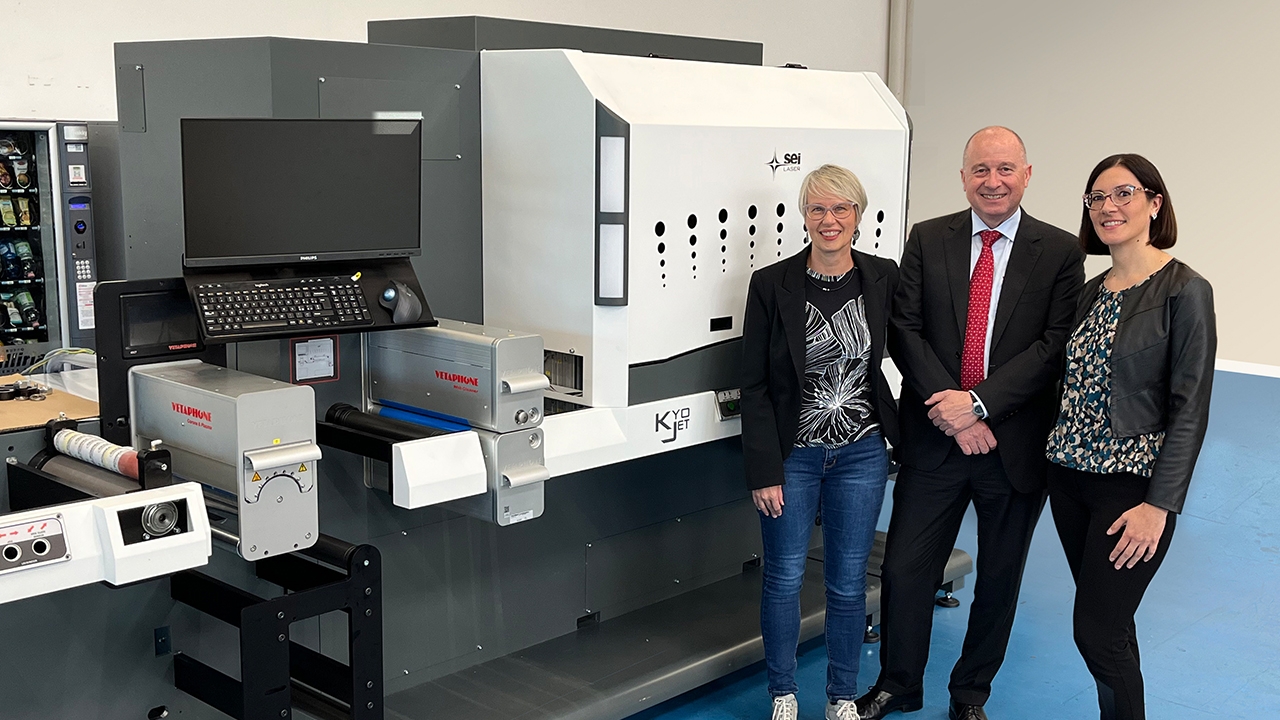J K Fine Prints prepares for the next decade
An ISO 9001:2008 and ISO 14001:2004 certified company, J K Fine Prints has made a consolidated investment of Rs 30 crore since inception in 2007 of which Rs 20 crore was done in December 2013, writes Aakriti Agarwal.
The young directors, Himanshu Kapur, Rahul Kapur and Karan Kapur, took more than a year to conceptualize and systematically build the first floor of their existing factory in Mumbai with a vision to utilize the space by adding three flexo printing presses and supporting post-press equipment in the coming years.
‘The plant has been constructed keeping the next 10 years in mind, which gives us the opportunity to more than double our turnover in the next four years,’ says Himanshu Kapur.
A full-servo and auto register 10-color Gallus EM 280, an AB Graphic slitting and web inspection system and a core cutter are a part of the recent expansion. The other machines at the plant include a seven-color Gallus EM 280 bought in 2007, a four-color flatbed Concordhitek used for short-run jobs, an Orthotec CSL 3022 intermittent letterpress machine, along with post-press equipment such as an Omega web inspection and other converting machines. The company has outsourced its pre-press for flexo.
J K Fine Prints doesn’t house any secondhand machinery because Himanshu Kapur believes that, ‘in the long run they are not as efficient’. ‘And why go for an old model?’ he adds.
Explaining the absence of any offset press in the plant, Himanshu Kapur says, ‘Offset is a phenomenal process but is too complex for no reason. With flexo, we are not compromising on quality.’
The organization is run systematically where each job can be backtracked to the raw material and vendor. Labelstock, dies and photopolymer plates are numbered and saved for any future reference or repeat jobs. These numbers are also stated on the job sheet, which is used for tracing any equipment for that particular job. ‘We like to be organized to ensure efficiency. Time management is critical. I have EUR 2.5 lakh worth of spare parts, so if something goes wrong with any part of any machine, it gets replaced immediately,’ says Himanshu Kapur.
The Orthotec runs at 30-35m/min and the Gallus EM 280 at 100-120m/min. Himanshul Kapur points out that he runs the presses at an optimum speed to ensure quality. ‘The dots may not be as fine if a press is operated at a higher speed. And speed decreases as the job gets more complex.’
Interestingly, J K Fine Prints does not use Pantone colors. ‘The ink shades vary in each machine by five to seven percent as the heating and ink transfer is different in every press. Thus, each machine has its own set of dedicated inks which are made in-house using only basic colors,’ he explains.
Growing at a rate of 20 to 25 percent year-on-year, J K Fine Prints currently gets 20 percent of its turnover from exports to markets such as Africa and the UAE. The company has also seen a surge in demand from the domestic market. ‘In India, rural areas and under penetrated states such as Bihar and Uttar Pradesh, where spending power is now increasing, has more growth potential in packaging,’ says Rahul Kapur.
Security printing is also an important aspect of the business as it fetches 20 percent of the company’s turnover. Karan Kapur says: ‘The counterfeit market is picking up so most companies catering to petrochemicals, pharmaceuticals, FMCG, automobiles, etc are gradually shifting to security labels. We cater to value added and specialized jobs.’
The labels industry is bound to grow because the per capita consumption of labels is very low in India compared to the developed world and it will increase with increased consumer spending. Also companies are realising the importance of attractive labels and this is where value additions such as foiling, screen printing, etc comes into play. However, Karan Kapur points out that he does not see many new players getting into the industry because of entry barriers such as the high cost of quality label printing machines and significant rupee depreciation. ‘Unless you are really sure you have a very large base of ready customers you don’t want to pump in that kind of money into the business. This industry requires high level of expertise and it is not easy to run a label printing plant,’ he says.
As for new technologies in the Indian market, Rahul Kapur says: ‘I don’t see new technologies coming into India very easily because of price competitiveness and cost consciousness. One needs to constantly work on adding value and reducing costs.’ Speaking of shrink sleeves, he adds: ‘We don’t want to get into that segment yet but if we decide to, we can do so with the new Gallus. Shrink sleeve is a limited market but is here to stay. The value addition is not much. So, the machine run time is the same and the end product manufactured is of lesser value.’
Finally, speaking on digital printing, Rahul Kapur says that the technology is more suited for personalization of labels whereas J K Fine Prints aims to cater to volumes. ‘A lot of companies require mass production and we see more scope there. We cannot ignore digital in the next 10 years but as of now we are not looking at variable printing,’ he concludes.
Stay up to date
Subscribe to the free Label News newsletter and receive the latest content every week. We'll never share your email address.

